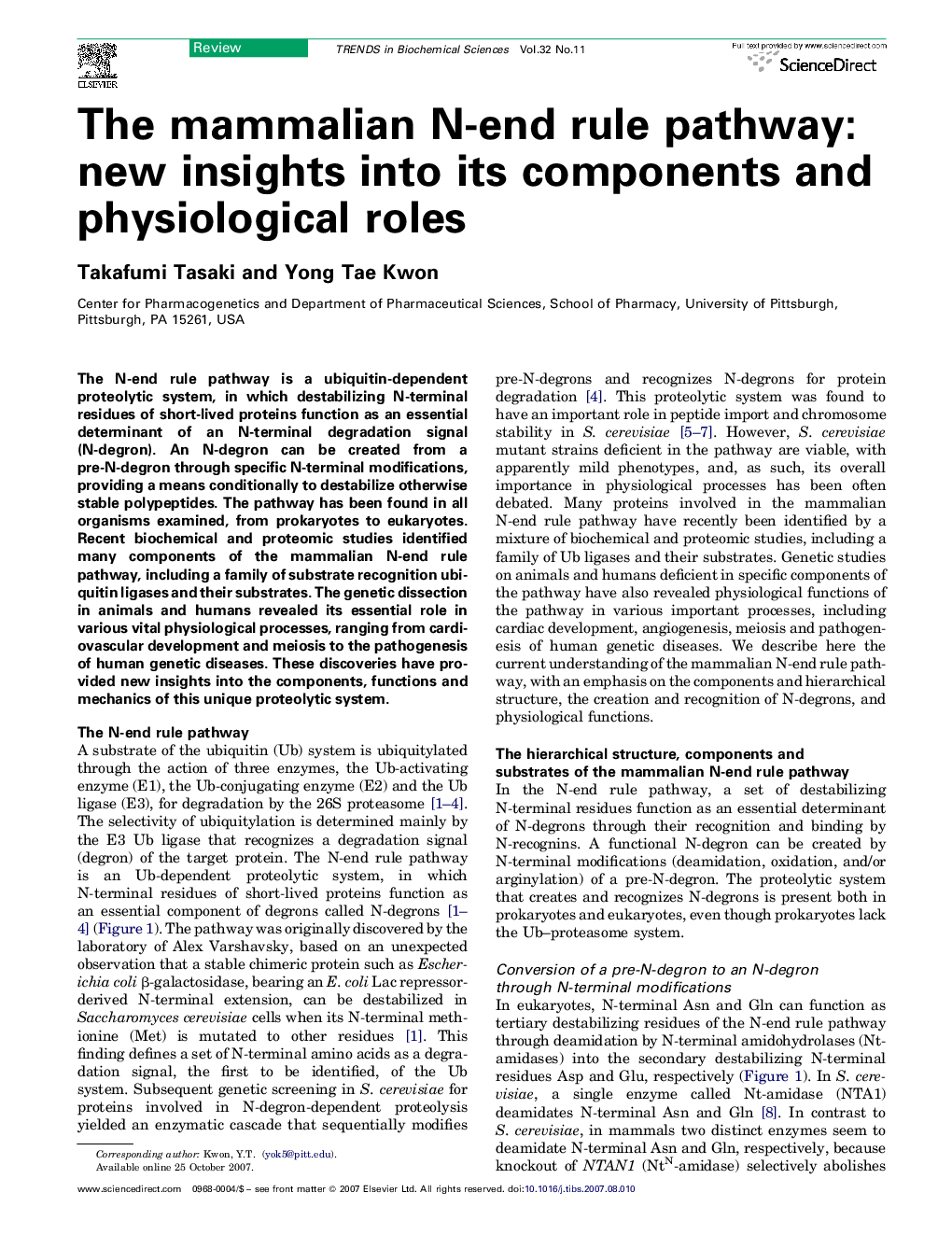| Article ID | Journal | Published Year | Pages | File Type |
|---|---|---|---|---|
| 2031327 | Trends in Biochemical Sciences | 2007 | 9 Pages |
The N-end rule pathway is a ubiquitin-dependent proteolytic system, in which destabilizing N-terminal residues of short-lived proteins function as an essential determinant of an N-terminal degradation signal (N-degron). An N-degron can be created from a pre-N-degron through specific N-terminal modifications, providing a means conditionally to destabilize otherwise stable polypeptides. The pathway has been found in all organisms examined, from prokaryotes to eukaryotes. Recent biochemical and proteomic studies identified many components of the mammalian N-end rule pathway, including a family of substrate recognition ubiquitin ligases and their substrates. The genetic dissection in animals and humans revealed its essential role in various vital physiological processes, ranging from cardiovascular development and meiosis to the pathogenesis of human genetic diseases. These discoveries have provided new insights into the components, functions and mechanics of this unique proteolytic system.
